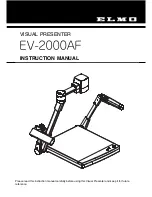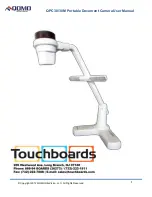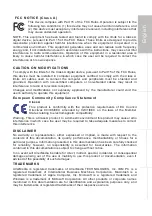
Figure 78
damper, similar in appearance to the
opening-blade dampers, w hich fits into a
slot to the right of the blades. Fig. 77.
On reassembly, first seat the shims and
the dampers as shown in Fig. 77. Next
place the washers over the pivot posts.
The multiple-sectioned blade of the
opening-blade set, Fig. 76, may be the
only "tric k y " blade to replace. First posi
tion the tw o blade arms as shown in Fig.
78. Notice that the brass bushing on the
upper arm fits over the small pin, and the
hole fits over the post on the opening-
blade driving lever (the lever that actually
drives the blade set up and down). To
position the lower arm, fit its hole over
the pivot post, Fig. 78.
N ow swing the large section of the
blade into place. Seat the slot in the large
section over the post on the opening-
blade driving lever. Fig. 79. As you
replace each of the remaining sections, fit
the blade slot over the opening-blade
driving lever and fit the blade hole over
the pivot post. Once assembled, the
opening-blade set should cover the focal-
plane aperture.
Next replace the aperture mask and the
six individual sections of the closing-blade
set. The slot in each blade fits over the
post on the closing-blade driving lever,
Fig. 79. The hole in each blade fits over
the pivot post.
In the closing-blade set, the multiple-
sectioned blade goes last. Fit the brass
bushing over the small pin, and seat the
hole in the same arm over the post on the
closing-blade driving lever. Fit the hole in
the other arm over the pivot post. Fig. 73
REMOVING THE SHUTTER
To remove the shutter, take out the
three shutter-retaining screws. Then lift
the shutter far enough from the mirror
ARM
C LO S IN G -
BLA D E
Figure 79 First section o f opening blade in position
Figure 80
cage to reach the wires which connect to
the shutter-terminal board.
Notice that the wires pass behind a
clamp at the side of the focusing-screen
mount, Fig. 80. Bend the clamp to free
the wires. Then unsolder the four wires
from the shutter-terminal board — red
and brown to the electromagnet, gray to
the X-sync contact, and the black to the
trigger switch, Fig. 81.
W ith the shutter removed, you have a
better view of the trigger-switch eccen
tric, Fig. 82. The eccentric, accessible
through a cutout in the fro n t plate, pro
vides your 1/1000-second adjustment.
However, you may prefer to set the
trigger-switch adjustment before you
replace the shutter.
Why? That way, you're sure the shutter
is right before you start adjusting the
shutter speeds.
Also,
some of the
cameras which use the Seiko shutters
d o n 't provide clearance cutouts over the
trigger-switch eccentric. As a result, you
can't reach the trigger-switch eccentric
w ith the camera assembled.
Adjusting the trigger-switch eccentric
w ith the shutter removed requires a
special test circuit. W ith the test circuit
connected to the shutter's electromagnet
and trigger switch, the shutter should
deliver 1/1000 second. The test circuit
simply simulates the camera's timing cir
cuit at the 1/1000-second setting.
So, w ith the test circuit connected, you
can adjust the trigger-switch eccentric for
an accurate 1/1000 second. The test box
shown in Fig. 83 has a two-position
sw itch to allow the selection of a second
shutter speed. A slower shutter-speed
capability can be handy as an operational
check.
Remember,
w ith no current
UPPER
ARM
















































